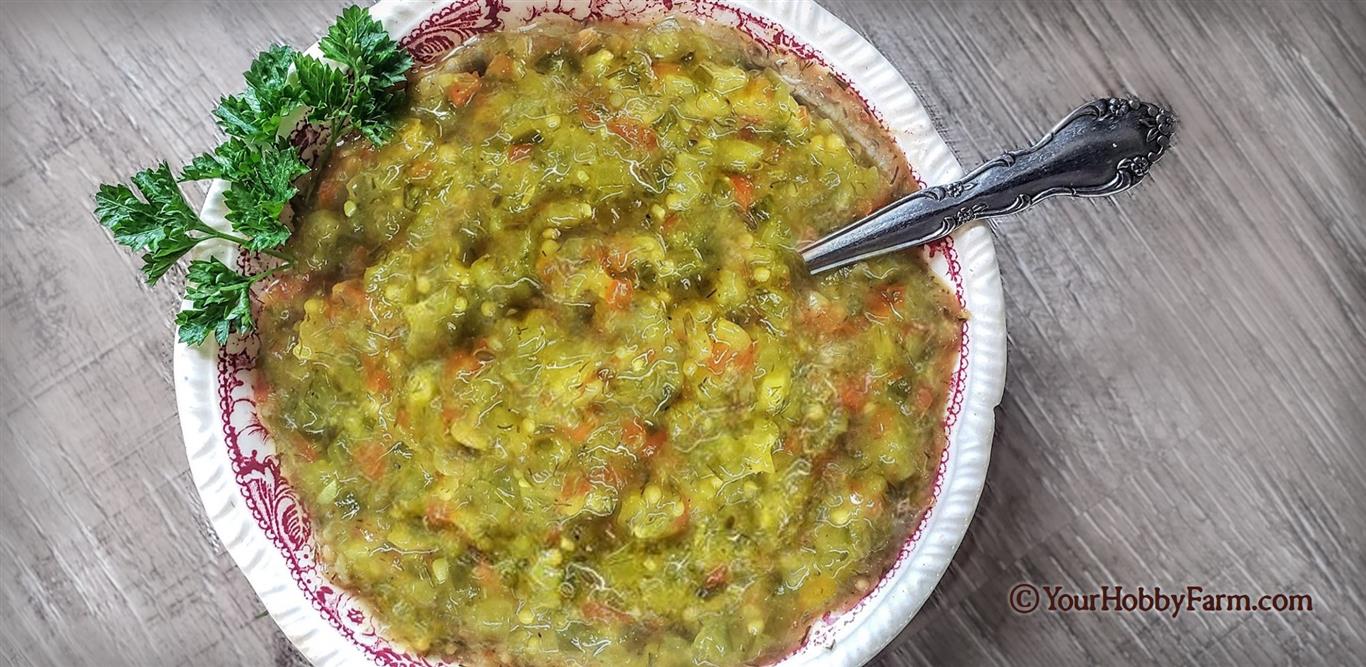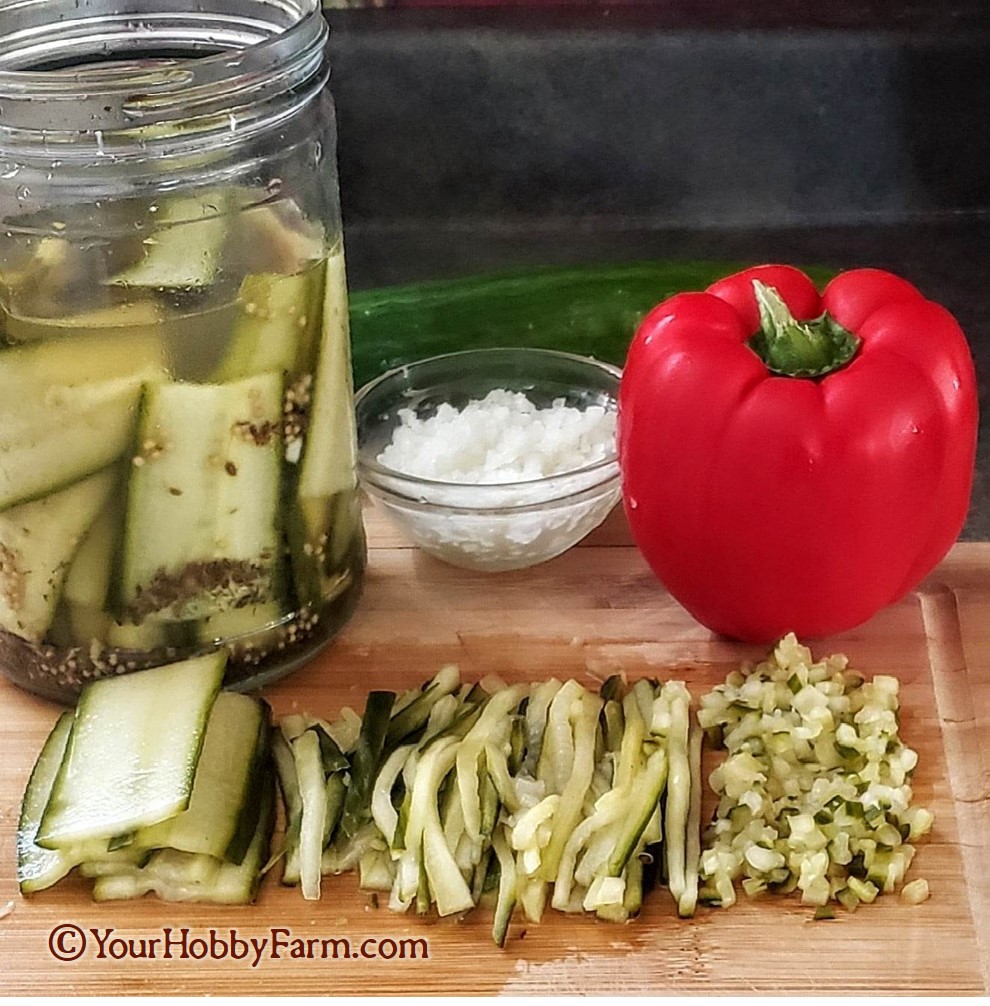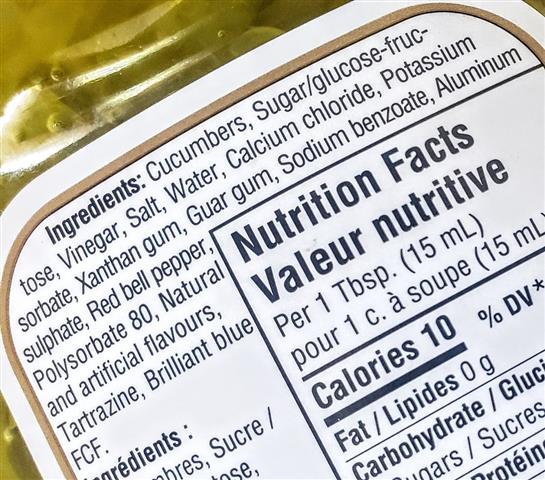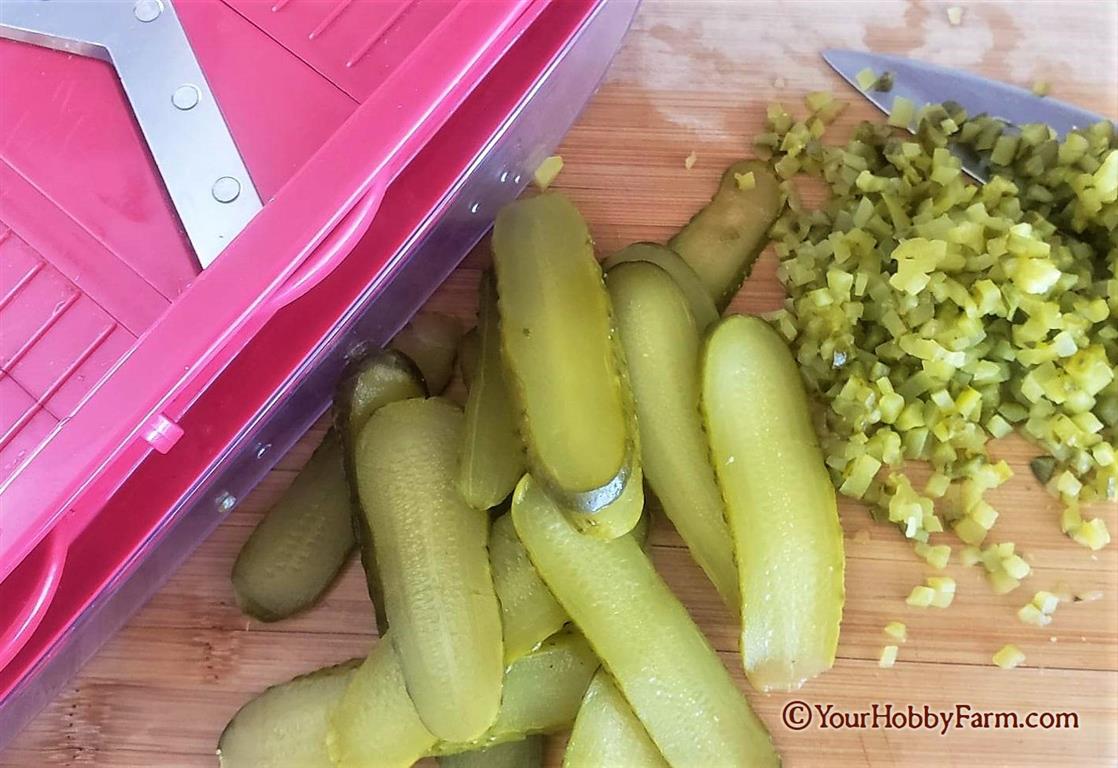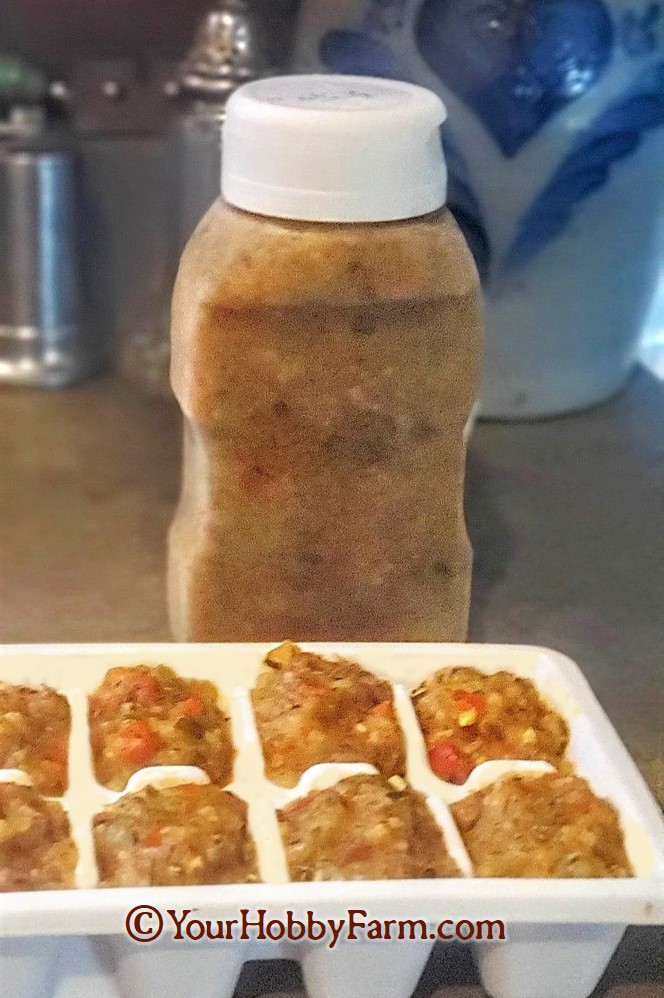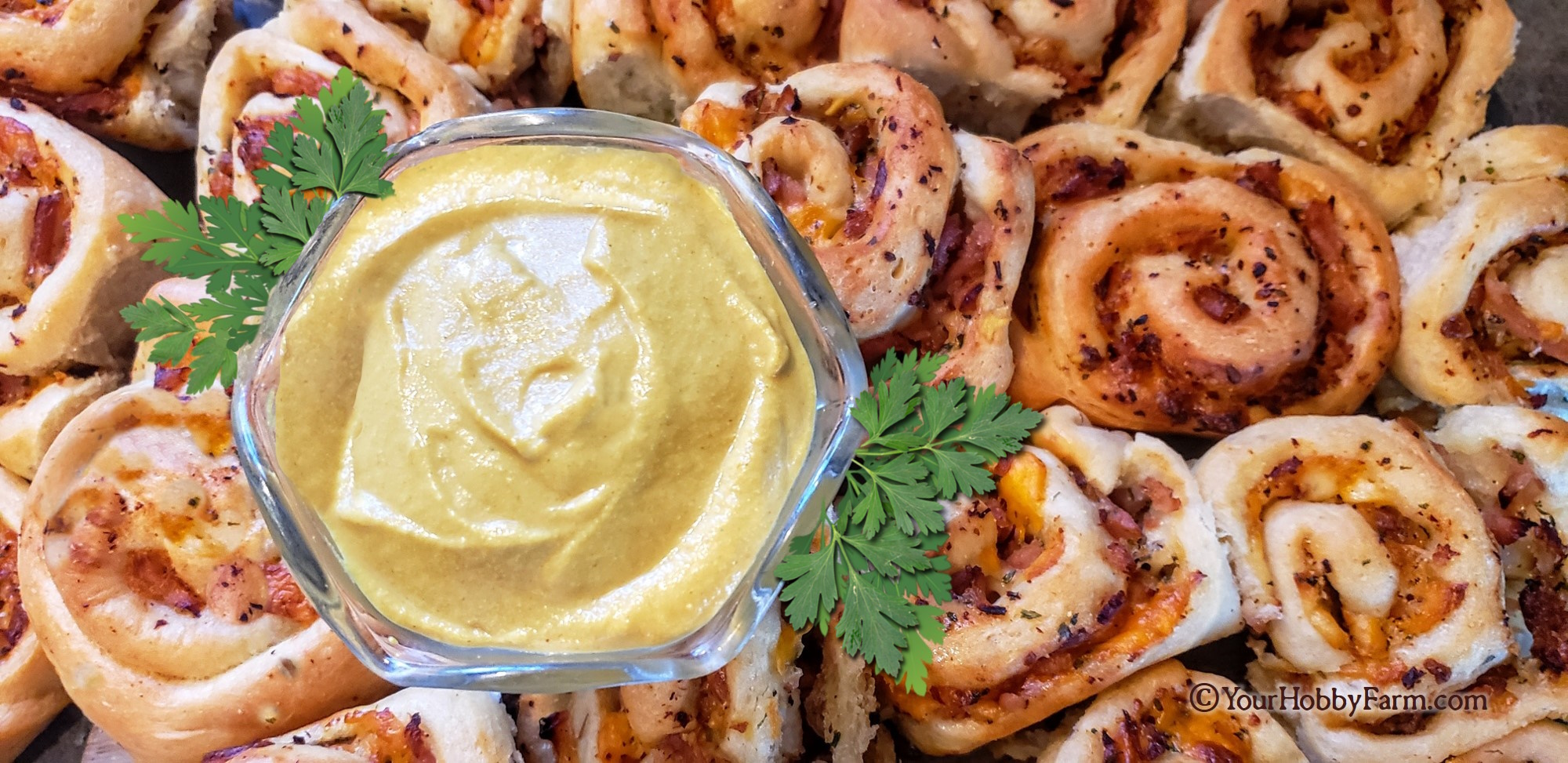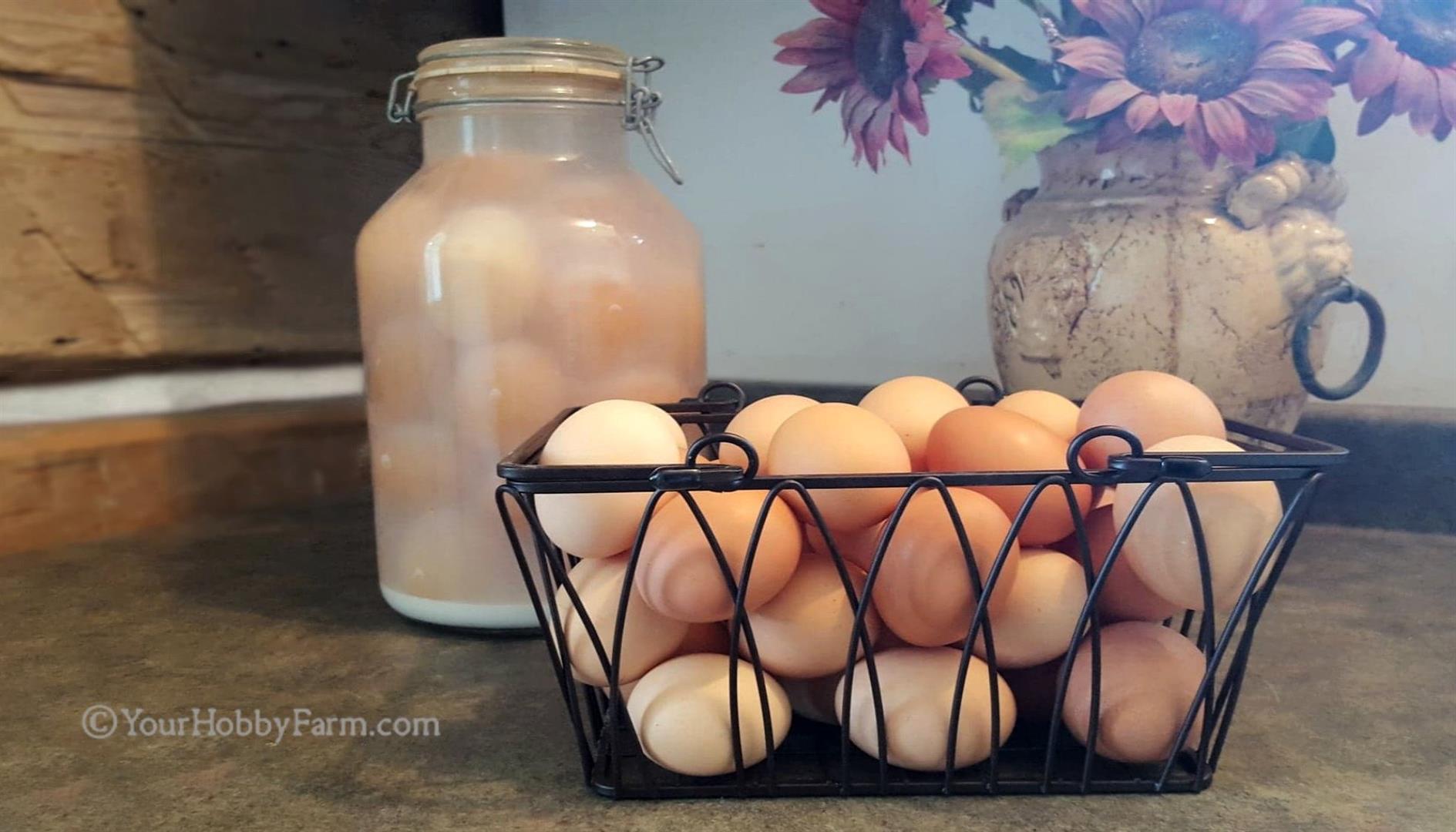Easy, Delicious Pickle Relish Recipe
If you're looking for a quick, easy homemade pickle relish that will enhance your menus, you've come to the right place! Our flavorful relish recipe tastefully balances a gentle sweetness with zesty tang, and hints of aromatic dill, pairing perfectly with typical summertime fare of hot dogs, hamburgers, salads, and more!
Among a myriad of condiment favorites available, there is a triad that are truly North American warmer weather favorites: Ketchup, Mustard, Relish! A picnic or barbeque just isn't complete without them!
What is Relish?
What does relish mean? Well, that's a great question! There are two answers, and we believe that both apply to this pickle relish recipe!
- (verb) to take pleasure in something, to greatly enjoy it.
- (noun) a condiment that's eaten with plain food to add flavor or to complement the dish.
If we put that together in a sentence it would be something like this: We relish the thought of you relishing our homemade pickle relish recipe!
What is a relish? It's typically a condiment. There are many different types of relish enjoyed around the world. In North America, relish is typically made from either pickled or fresh cucumbers, often with other vegetables like bell peppers, garlic, and onions, flavored with vinegars, herbs, spices, salt, and a sweetener.
What does relish taste like? The tastes of relishes vary depending on the ingredients in them. Some are sweeter while others are spicy and tangier. But no matter the type of relish, it should taste fresh with rich, bold, pungent flavors. While they may vary in texture, pickle relish typically has a saucy base with a slight crunchiness to it. Our pickle relish recipe offers a great balance of sweet and savory tang, with a bit of crunch. A perfect condiment for summertime menus!
Why Make Pickle Relish Instead of Just Buying It?
Why bother making pickle relish when it's so easy to buy it? That's a great question, and we have several reasons for you to consider.
There's a sweet sense of accomplishment knowing how to make your own foods, as with pickle relish, then to share it with others, and enjoy it yourself! It's fun and satisfying to enjoy the work of your hands.
You know exactly what you are eating! Clean and green, wholesome ingredients support your health and the welfare of those you love.
You can tweak the ingredients in homemade recipes, such as this one, to satisfy specific tastes or dietary needs.
Homemade pickle relish is one of several ways of preserving garden and market produce. In fact, hundreds of years ago, helping to preserve summers' harvest is believed to be the origin of relishes.
Knowing how to make your own condiments, like pickle relish, is part of being self-reliant instead of running off to purchase the least expensive commercially made brand and consuming all that it's composed of...
importance-of-reading-labels
What Is Relish Made Of? Homemade Vs Store-Bought Relish Ingredients
What is relish made of? Our homemade pickle relish recipe uses clean, healthy ingredients.
We prefer simple, wholesome, nourishing ingredients over foods laced with food colorings, processed sweeteners, preservatives, and chemicals which are commonly used in commercially prepared products.
This is why it's so important to read container labels. Do you know what each of those ingredients are? Besides corn-based sweeteners, food colorings, etc., let's look at five of them.
Sodium Benzoate: Sodium Benzoate is a widely used preservative and antimicrobial substance. A real concern over the use of sodium benzoate is its ability to convert to benzene, which is a known carcinogen.
Evidence also has suggested that a high intake of Sodium Benzoate may link to attention deficit-hyperactivity disorder in children. Testing on mice showed significant impaired memory and motor coordination.
Aluminum sulphate: Aluminum sulfate is an aluminum 'salt' composed of aluminum, sulfur, and oxygen. "Substantial ingestion of aluminum sulphate causes burning in the mouth and throat, gingival necrosis, nausea, vomiting, diarrhea, abdominal pain and, in severe cases, hemorrhagic gastritis with circulatory collapse", Source.
Tartrazine: Tartrazine is a Yellow AZO dye. This second most widely used food coloring agent, which gives food a bright yellow color, is made from petroleum products and derived from coal tar. Sweden, Switzerland, and Norway have banned Tartrazine on the grounds of its anaphylactic potential.
Polysorbate 80: This is another chemical that should definitely be avoided. Besides being a known carcinogen, Polysorbate 80 also "compromises proper gastrointestinal function. Research studies have repeatedly shown that it can increase intestinal membrane permeability through a variety of means including causing the release of enzymes that damage the cellular structure." Source
"Natural Flavors": "Natural flavor" is now the fourth most common ingredient listed on food labels! While these so called "Natural Flavors" may suggest the thought of wholesome foods, many of the ingredients under that label are in no way natural nor healthy for us.
What is "natural flavors"? This one ambiguous 'ingredient' may contain 50 -100 hidden ingredients, all without being itemized on the label. For one example: MSG is disguised under "natural flavors". "80 to 90 percent of the ingredients that make up natural flavors contain chemical solvents and preservatives. These may include the cancer-causing chemical BHA, propylene glycol (found in antifreeze), and fillers comprised of some of the most common allergens (corn, soy, and dairy)", Source.
Some of these additives can be addictive, and others can cause chronic headaches, anxiety attacks, depression, learning disabilities, behavioral outbursts, stomach problems. etc.
When we make our own simple, naturally healthy foods we avoid these compromising additives.
How Do You Make Relish?
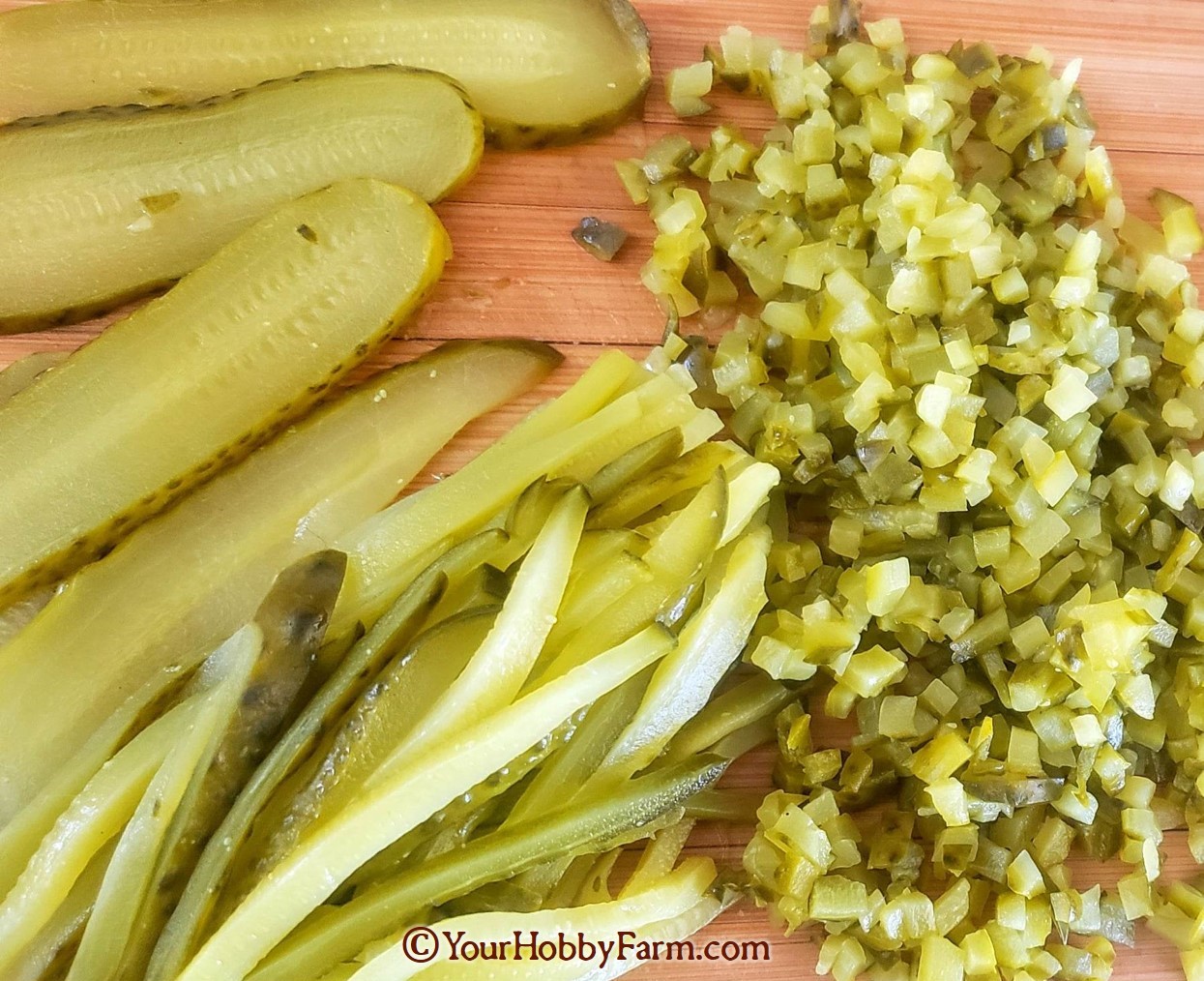 Pickles, sliced, then diced, are only the beginning of the explosions of flavors in this relish.
Pickles, sliced, then diced, are only the beginning of the explosions of flavors in this relish.YourHobbyFarm.com
Some have asked, "Is relish just chopped pickles?" While chopped or minced pickles can be a simple substitute for relish, pickle relish is made of more ingredients than just chopped pickles.
How do you make relish? What is relish made of? Since there are many types of relish, the ingredients used in relishes vary greatly. Relishes can be made from many types of vegetables. Different types of pickle relishes include corn, zucchini, tomatoes, peppers, radishes, artichokes, garlic, onions, and more. This yummy Beet Relish recipe is a great example of a veggie relish.
But not only vegetables are used in making relishes. Among fruits used to make relishes, we've seen recipes for cranberries, apples, and even watermelon rind relishes. Here's a simple, delicious looking Cranberry Relish recipe for you!
As for our own easy and delicious homemade pickle relish, we simply use homemade dill pickles (you can use store-bought dill pickles as well), red bell peppers, onion, vinegar, maple syrup for sweetening, salt, and spices.
These ingredients create a lovely balance of tang and sweetness, with just the right amount of zing and crunch. In our opinion, it's the perfect, all-around pickle relish recipe.
Here's Our Yummy Homemade Pickle Relish Recipe

Ingredients:
Finely Dice the these first 3 ingredients and set them aside.
- 3 cups of finely diced Dill Pickles (Homemade Dill Pickles work great!)
- 1/2 cup of finely diced Bell Peppers (Green, Red, Yellow and/or orange bell peppers)
- 1/2 cup of finely diced Sweet Onion
Combine the wet ingredients together in a saucepan.
- 1/2 cup of Dill Pickle Juice or Pickling Brine
- 1/8 cup of White Distilled Vinegar
- 1/8 cup of White Wine Vinegar
- 1/8 cup of Red Wine Vinegar
- 2 tsp of Prepared Mustard
- 1/4 cup of Pure Maple Syrup (or Raw Sugar)
Note regarding the choice of vinegars above: These vinegars are our favorite combo but you can use the same amount (3 x 1/8 cup) of any vinegar or combination of vinegars of your choice.
Mix dry ingredients together in a small bowl and set aside:
- 2 Tbsp of Cornstarch (or Arrowroot Powder, or Tapioca Flour)
- 2 tsp of Dill Seeds
- 1 1/2 tsp of Mustard Seeds
- 1 tsp of Garlic Powder
- 1 tsp of Onion Powder
- 1 tsp of Dill Weed
- 1 tsp of Dried Minced Garlic (or you can use ClubHouse Roasted Garlic and Peppers)
- 1/4 tsp of Sea Salt
- 1/4 tsp of Black Pepper, freshly ground
Instructions:
Combine your finely diced dill pickles, bell peppers, and sweet onion together and set aside.
Then, in a saucepan, combine the pickle juice, vinegars, prepared mustard, and maple syrup (or raw sugar). While the liquid ingredients are still cold, combine the dry ingredients with the liquid ingredients in the sauce pan and mix well.
Cook on medium-low heat until this mixture begins to thicken. Then add the diced pickles, bell peppers, and onion and mix all ingredients together.
Continue cooking for 10 to 20 more minutes until the relish thickens to a nice consistency.
Allow it to cool. Transfer your relish to a clean container. Keep your relish in the fridge.
Notes: Tbsp = Tablespoon, tsp = Teaspoon
• You can chill your relish and use it right away if you'd like. But when you allow the flavors to meld together until the next day, it's even more delicious!
• After you've made and tasted this pickle relish recipe, the next time you make it, feel free to adjust the sweetness, saltiness, and acidity to your liking by adjusting the amount of maple syrup or sugar, the vinegar, or the salt.
• Also, here at our homestead, we enjoy dehydrating different veggies and herbs. etc., and often powder some of them afterwards. This allows us to have things on hand that we cannot easily purchase at the store. For our own use, we add to the recipe above:
• 1 Tbsp of Green Bell Pepper Powder
• 1 Tbsp of Zucchini Powder
• 1 Tbsp of Tomato Powder
Thia relish recipe tastes fine without these, but our homemade vegetable powders are a great way to add additional flavors and nutrients to different foods including our homemade pickle relish recipe!
Enjoy!!

Tips and Tricks for Making Pickle Relish
Here are a couple tips and tricks that we've found helpful:
To pre-prep the veggies: Finely chop your bell peppers and onions ahead of time, measure the amounts that you need for a batch, package, and freeze them. If you have an extra red bell pepper left over from another recipe, dice any extra and freeze it.
You can also dice your pickles ahead of time and leave them stored in their pickle juice in the fridge until you're ready to make your next batch of Homemade Pickle Relish.
This way, you'll have all your chopping done when it's time to make more pickle relish.
For dicing veggies nice and small, we've found
that using a mandoline for the first step in slicing the veggies
works great, creating consistently even, thin slices. After this initial
slicing, the rest of the dicing with a sharp kitchen knife is easier.
Tasty Ways to Use Pickle Relish
This pickle relish recipe adds an extra zing and a touch of crunch to summer salads. Try adding it to potato salad, chicken salad, or macaroni salad.
Tuna, chicken, and egg salad sandwiches are not complete without pickle relish. And it can enhance a ham, cheese, or tomato sandwich, giving it a fuller flavor.
Relish does a great job gussying up deviled eggs, chip dips, and spreads like this Relish Cheese Spread. It's a must-add ingredient for Tartar Sauce, Thousand Island Dressing, and Russian Dressing. Pickle relish can embellish the flavor of a meatloaf, perk up pork, and enhance the texture, flavor, and color of vegetable dishes.
And the best relish for hot dogs and hamburgers? In our opinion, this homemade pickle relish lifts a normal hamburger or hot dog to another level of yumminess!
Does Pickle Relish Go Bad?
Because of the higher acid content due to the vinegars in pickle relish, it can be stored in an airtight container in refrigerated for a few months.
Does pickle relish go bad? In time, yes, it can go bad. If you're unsure if it's still good, the best way to tell is to look at and smell the relish. If it has developed an "off" odor, appearance, or flavor, or if mold appears, it's too old and should be discarded.
Ways to Preserve Pickle Relish
It's likely that simply storing your freshly made pickle relish in the fridge for several weeks is sufficient because it may be used up before then. But there are a couple other ways to preserve pickle relish to extend its shelf life, especially if you're doubling or tripling this pickle relish recipe.
Can You Freeze Pickle Relish?
Yes, you can freeze pickle relish as well! Since our family loves this relish, it doesn't tend to last long in our house. But when we've made extra, we freeze the pickle relish, which also works well.
Here's how you do it: After you've made your relish and it has cooled, spoon your cooled relish into freezer containers.
Freezing it in a glass jar can result in a broken jar because of expansion while freezing. So, if you're using glass, be sure to leave extra space.
You can also reuse relish squeeze bottles, which works well. And if you're freezing smaller amounts, ice cube trays work well.
Then when frozen, transfer the cubes to an airtight container or zip-lock freezer bag. Frozen pickle relish will remain good for several months to a year.
When freezing in ice cube trays, each cube is approximately 2 tablespoons of relish. Knowing this is very handy for measuring out the amount that you'll need for the next little while. Once it is defrosted, it can last in the fridge for weeks to a few months.
How to Can Pickle Relish
Wondering how to can pickle relish? Process 8-ounce jars of relish in a water bath canner according to manufacturer’s instructions for 10 minutes. If you're using pint jars, process them for 15 minutes. Then remove from your jars of relish from the water bath canner.
Allow them to cool for 12 to 24 hours. Check to make sure that your jar lids have properly sealed.
An inward indentation indicates that they've sealed. Also, give the jar lid a gentle tap with a metal spoon and listen to the sound. If it's properly sealed, you'll hear a high-pitched ringing sound when the lid is tapped. If it's not properly sealed, your tap with the metal spoon on the lids will give a dull sound. When you know they've sealed, remove the lid bands.
Store your jars of canned pickle relish in a cool, dry, dark place for up to 1 year.
FAQ: Answers to Some of Your Pickle Relish Questions
Click on the ▶ for answers to the questions.
What's the best relish for hot dogs and hamburgers?
What's the best relish for hot dogs and hamburgers?
For hot dogs, some prefer a pickle relish with a more mustardy base, while hamburger relish may tend to have more of a ketchup base. Having said that, a classic pickle relish, such as the recipe above, is delicious on both hamburgers and hotdogs. And if you want. Just add more mustard or ketchup to your dog or burger, according to your taste.
How long is homemade pickle relish good for?
How long is homemade pickle relish good for?
When canned, homemade pickle relish can be stored in a cool, dark place, for at least a year or more and retain its fresh qualities. Frozen homemade pickle relish, properly packaged, should be good for about a year as well.
If the seal of canned relish is broken, the relish will keep in the fridge for a couple of months. The same goes for frozen relish after it's been thawed.
Does pickle relish go bad? If so, what are signs that it's no longer good?
Does pickle relish go bad? If so, what are signs that it's no longer good?
Relish that has been kept in the fridge should be good for several months to a year. Here are a few signs that your pickle relish may no longer be good:
- If your relish tastes unpleasantly sour, or generally not tasting as it should, this may indicate that it's gone bad.
- If your pickle relish has an 'off' odor, different than it smelled when it was fresh, it should probably be discarded.
- If you see any mold or any visual changes in the color and texture, these are signs that it's time to toss the relish and make a new batch. Perhaps scale down the recipe above to half the amount to retain freshness or freeze half of it to use later.
What's the difference between homemade pickle relish vs store-bought relish?
What's the difference between homemade pickle relish vs store-bought relish?
The short answer is this: You have the joy of creating and sharing your own delicious condiments. Making homemade food is fun and satisfying!
You can tweak the ingredients and flavors to suit your taste and dietary needs.
You know exactly what's in your pickle relish and can ensure that your ingredients are all fresh and healthy.
And making homemade pickle relish is a great way to preserve garden veggies for future use.
Additionally, if you knew all the ingredients that they put into commercially made pickle relish, and the affects that some of these ingredients have on our bodies, you'd not want to consume these chemicals, addictive, and toxic substances, nor feed them to your family and friends.
Can I dehydrate pickle relish?
Can I dehydrate pickle relish?
Yes, you can dehydrate pickle relish. Spread your relish out thinly on parchment paper or silicone fruit leather trays. We'd suggest drying it at 135°f / 57°c. It will take several hours. The sweeter your relish is, the longer it will take to dehydrate it. Continue drying it until it's brittle and snaps like a cracker when you bend it.
When brittle dry, store your dehydrated pickle relish in an airtight container for up to a year. A sweeter relish may be prone to becoming sticky, especially if you tend to open the jar a lot, so consider using a moisture absorber to help reduce moisture.
After it's completely dried, you can then grind some of your dehydrated pickle relish into pickle powder! Think of the fun ways that you can use your new "secret ingredient" in a variety of foods!
Is pickle relish gluten free?
Is pickle relish gluten free?
Yes, pickle relish is made from ingredients that are naturally gluten free. Gluten is a protein found in some grains, including wheat, spelt, barley, and rye. Pickle relish generally contains pickled cucumbers and other vegetables, vinegar, spices, and sweeteners. The thickeners that are suggested in this recipe do not contain gluten.
What's the difference between chutney and relish?
What's the difference between chutney and relish?
Relish and Chutney are quite similar. Both are condiments made from small pieces of vegetables or fruits mixed with spices and other flavors, vinegar, sweetener, and spices.
The main difference between the two is their consistency. Relish ingredients are cooked for a short time in vinegar, sweetener, and spices, retaining some crunchiness in texture. Chutney is typically fruitier and is usually slow-cooked until the ingredients become smooth and soft.
Make Your Own Collection of Homemade Condiments!
Of all the different types of condiments, you can choose to make a collection of the homemade condiments that you like best! Create your own list of condiments to always have on hand for any occasion that may arise. And you may also want to make homemade condiments as gifts! They're sure to delight any recipient!
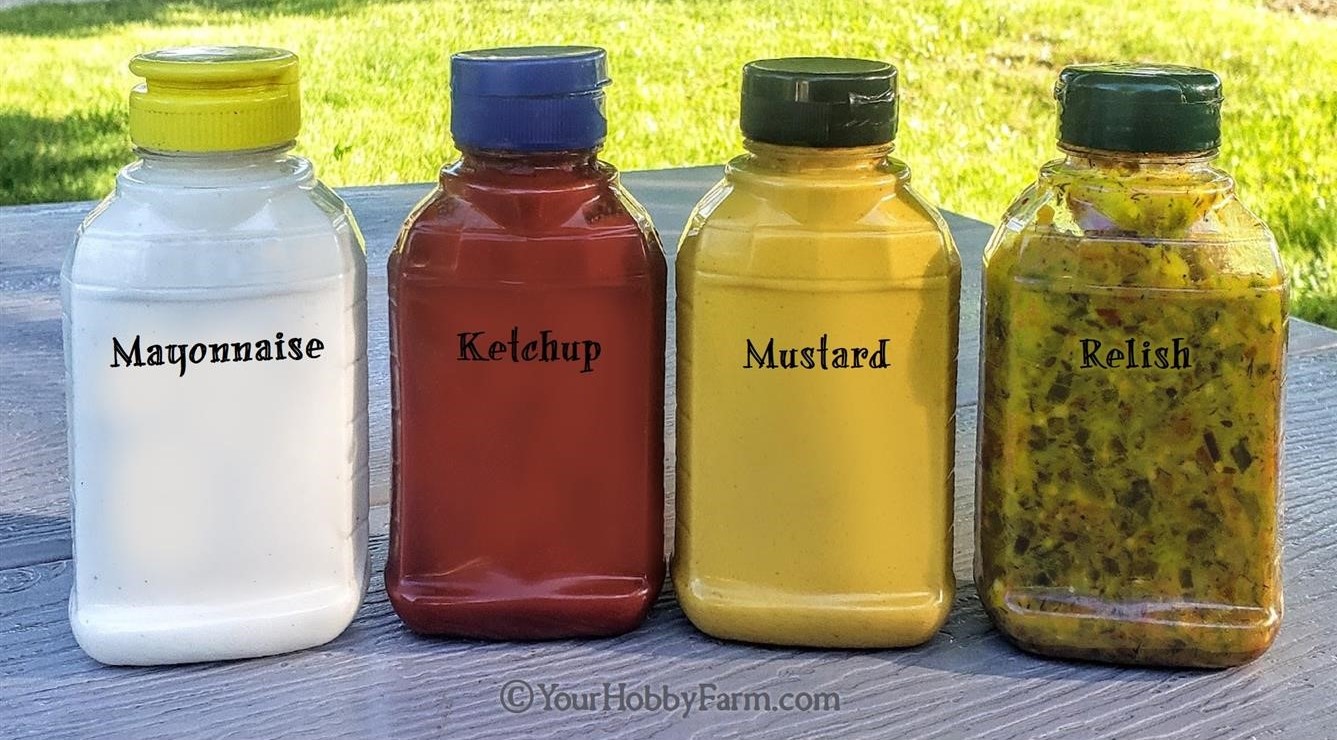 You'll be proud to serve your own healthy, delicious collection of homemade condiments! They will enhance the flavors and enjoyment of your next barbeque gathering with family and friends! YourHobbyFarm.com
You'll be proud to serve your own healthy, delicious collection of homemade condiments! They will enhance the flavors and enjoyment of your next barbeque gathering with family and friends! YourHobbyFarm.comIf you're not yet familiar with other recipes in our Homestead Condiment Collection, do yourself a favor and give them a try! Healthy, delicious, and easy to make. Our Ketchup, Mustard, Mayonnaise recipes have replaced their store-bought counterparts in our family and in many others as well! And, when you add this Pickle Relish recipe to the collection, you're all set for your next picnic or barbeque! Enjoy!!
Translate This Page!
Traduire Cette Page!
¡Traduzca Esta Pagina!



Piping Rock©
Bringing you the highest quality In hundreds of health care and life-enhancing natural products at the
lowest cost to you!
high reviews, crazy deals,
happy, healthy customers!
Click here and save today!
Business Appreciation
* This website is not affiliated with
Piping Rock

Supporting our local feed mills
Meunerie Alexandria Milling
613-525-1973
Great Products • Great Prices
Great Service
Click the pic for their
facebook page!
Meunerie Alexandria Milling
Established in 1962 by The Massie Family
Email: Alexandriamilling@hotmail.Ca
475 Massie Crescent
Alexandria, Ontario, Canada
~~~
Small Business Appreciation
* This website is not affiliated with
Meunerie Alexandria Milling

